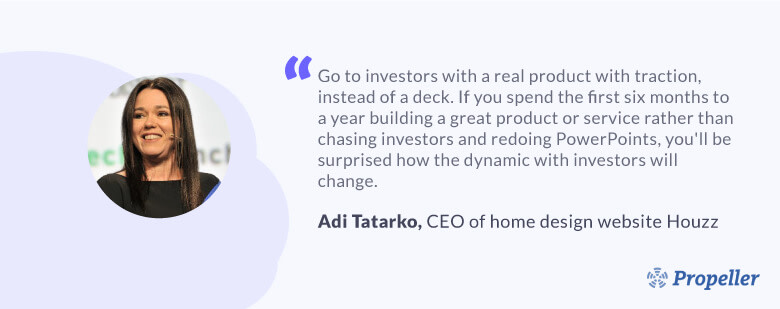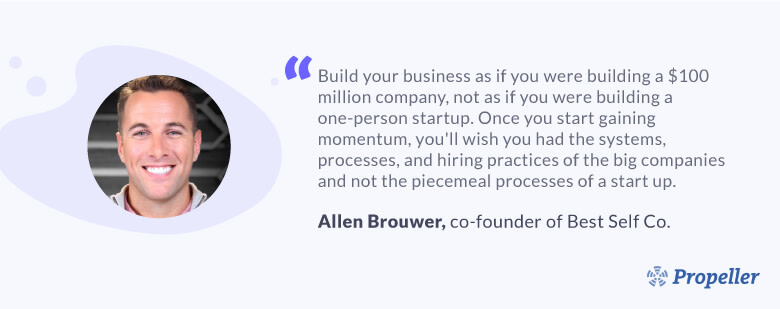Once upon a time, unicorn startups – those valued at $1B or higher – were a rare breed.
Today, unicorns aren’t nearly as uncommon as they were a few years ago. (For a bit of perspective, consider that there were only 39 companies that fit the newly minted definition in 2013, whereas 47 companies broke the unicorn barrier in 2018 alone.)
But does that mean it’s any easier for new startups to achieve the coveted status?
Not necessarily.
Background
To find out what it takes to become a unicorn in this day and age, I studied dozens of interviews with those who have already done it – namely, unicorn growth leads and founders. Truth be told, there’s an overwhelming amount of resources out there for aspiring unicorn founders.
Lucky for you, I distilled these interviews down to the core nuggets that founders need to remember when growing their own startup. Ready? Let’s dig into the biggest lessons I took away from my research.
Note: Want to skyrocket your startup success with the right tools & data? Try Leadfeeder free for 14 days to discover the best kind of leads and strategy that works for your business.
6 Things I Learned from Studying Interviews with Unicorn Growth Leads
1. There’s no definitive recipe for success, but there are key ingredients that stack the odds in your favor.
There’s more than one way to build a company with billion-dollar potential. However, the majority of future unicorns do have common elements that can be viewed as early indicators of success. Well before they receive a $1B valuation, you can spot potential unicorns based on these factors.
Most unicorn startups have the following in common:
A simple solution to an existing problem.
A strong (and highly marketable) value proposition.
A clear vision for the future of the company and product (and a plan for how to get there).
Distinct positioning, even if they’re not first-to-market.
A pipeline full of new leads, including potential beta testers and customers.
An easy-to-use UX that allows users to quickly adopt and “get” the product.
2. Investors (usually) don’t fund ideas; they fund promising products and teams.

Great ideas don’t have value until you do something with them. What separates unicorns from the rest of the pack is that they have the right people, skills, tools, and data to make the magic happen
It’s important to show investors that – funding or not – you’re serious about pursuing your ambitions. That means taking matters into your own hands, bringing a product to market, and tracking your results to show viability.
For investors deciding which startups to fund, traction is the number one priority, closely followed by projected revenue and growth. But these projections need to be backed by hard data, like a weighted sales pipeline forecasting growth over the next 6, 12, or 18 months.
If you ask for funding without any numbers to back up your claims, you risk scaring off potential investors for good. Instead, wait to seek out investors until you have a marketable product with proven demand, as well as a steady stream of opportunities flowing into your pipeline.
3. Your timeline is less important than your ability to iterate quickly.
Unicorns are often thought of as companies that come out of nowhere and grow fast. But that doesn’t mean the founders achieved success overnight. They’ve likely been working towards this milestone, in some form or another, for a very long time.
Although persistence doesn’t guarantee success, it does make it possible. We’ve all heard the proverb if at first you don’t succeed, try, try, try again. Loosely translated into unicorn-speak, this means if your product isn’t perfect yet, iterate, iterate, iterate!
Now, this may not be a direct quote from any of the interviews I read or listened to, but it is a recurring theme that aspiring unicorns can’t afford to ignore. Startup founders that want to make it to the big-leagues and impress investors need to make a habit of updating, testing, and improving as quickly and often as possible.
4. True product-market fit (PMF) captures power users and casual customers.

Nailing PMF (also known as “product-market-fit”) should be one of your first goals – and one that you continually revisit as your company and customer base grows. Unfortunately, that means that achieving PMF today does not guarantee you’ll have PMF tomorrow.
In fact, you can think of PMF as something achieved in two stages:
Early PMF, which provides proof-of-concept and connects you with your ideal customers or users; and
Growth-focused PMF, which appeals to a wider customer base and allows your business to scale.
As Alex Schultz, VP of Growth at Facebook, puts it: “When it comes to driving growth, people who are already using your product are not the ones you have to worry about.”
Yes, catering to early power users is crucial and can be a core element of growth. After all, these are people who are excited to provide feedback, test new versions, and spread the word about the company.
But in order to drive unicorn-level growth, your product needs to have mass appeal. You can’t scale if you can’t capture a larger market – which is why it’s so important to optimize for the casual user if you’re serious about driving growth.
5. The strongest startups are built to maximize growth, not profit.

There’s no rule that says you need to be wildly profitable to become a unicorn. In fact, one of the earliest unicorns, Nutanix, earned the status in 2013 despite a complete lack of profits.
As nice as we’d all like to have our cake and eat it, too, the fact is that profit and growth don’t always go hand-in-hand. In fact, pursuing profit can sometimes hinder your ability to increase revenue. This is especially true for early-stage startups working with limited resources.
The key, according to Pandey and others like him, is to find the right balance between incoming cash flow and what you reinvest in your business. That is, work towards building sustainable growth rather than opting for a quick, short-sighted bump in profits. Instead of focusing on growing your margins to impress investors with fast ROI, focus on perfecting your product, increasing your total revenue, and growing your user base.
6. Dream big! Because while growth itself is optional, preparing for it isn’t.

The message here is simple but powerful: if you want to be a unicorn, you need to act like one from the start. Yes, it’s safe to assume that you’ll learn some hard lessons and fail along the way, but you should always operate as if you’re guaranteed success. That is, any decisions you make or policies you define today should align with your long-term vision.
Not only is this good business sense, but it’s optimistic, too. As a founder and leader, you need to believe in your vision, product, and people so strongly that your default assumption is success.
Summary
To put this into practice, your company (regardless of size) should standardize procedures and practices sooner than later. Create a strong foundation that can support rapid growth so that when things do take off, you can scale with confidence that your business and team can keep up the pace.
Note: Want to skyrocket your startup success with the right tools & data? Try Leadfeeder free for 14 days to discover the best kind of leads and strategy that works for your business.
Now that you're here
Leadfeeder is a tool that shows you companies that visit your website. Leadfeeder generates new leads, offers insight on your customers and can help you increase your marketing ROI.
If you liked this blog post, you'll probably love Leadfeeder, too.
Sign up





